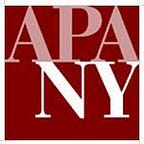The Future of Highways in New York City — A Conversation
On the evening of Tuesday February 11th, Open House New York partnered with the Gotham Center for New York History, hosting a conversation on the Future of Highways in New York City at the CUNY Graduate Center on 5th Avenue.
The panel was arranged as part of The Moving City series of conversations on the future of transportation and mobility in New York City. Moderated by Amy Plitt of CurbedNY, in a nearly packed auditorium, attendees were introduced to a healthy dialog of insights by current architecture/planning professionals, public/private engineers, and academics. Each practitioner brought a unique urban design lens to the conversation, offering personal and professional insight into the future of highway infrastructure in New York City.
The conversation began around the timely cessation of Robert Moses’ car-centric plans in the first half of the 20th century. Engineers Craig Ruyle of NYSDOT, and Olga Gorbunova, of Stantec, cited the inherent physicality and capacity needs of our system. How it is one of the oldest and narrowest, and how it includes many non-standard features. Adam Lubinsky, of WXY Studio, pointed out the different design and planning paradigms within the context of the urban fabric each corridor runs between. Highways originally built through urban renewal schemes as buffers to industrial waterfronts that once moved goods and people are now creating seemingly insurmountable challenges to the urban fabrics each highway moves throughout.
Over the course of the night the group touched on innovation, new technologies, freight deliveries, and long-term maintenance issues. While discussing general disinvestment in the highway system, Owen Gutfreund of Hunter College said, “the best thing we can do for highways is invest in transit.” His definitive retort caused the room to erupt in a loud round of applause. The conversation then moved through the current political climate and the pitfalls of investment strategies which coincide with the cycles of local, state, and federal election budgets.
The evening concluded with a question and answer session from the audience with topics ranging from: diversity, rail corridors, and the contentious BQE Rehabilitation project. The diverse backgrounds of the panelist group provided a comprehensive primer for anyone interested in understanding the driving forces behind the highway infrastructure projects of the past and future in NYC.
About the Author
Charlie Cunningham is a Project Manager focusing on the intersection of technology and the built environment through sustainable urban design at the firm EA Creative in New York City.
@charlieprima (IG / Twitter)
@eacreativenyc (IG / Twitter)
